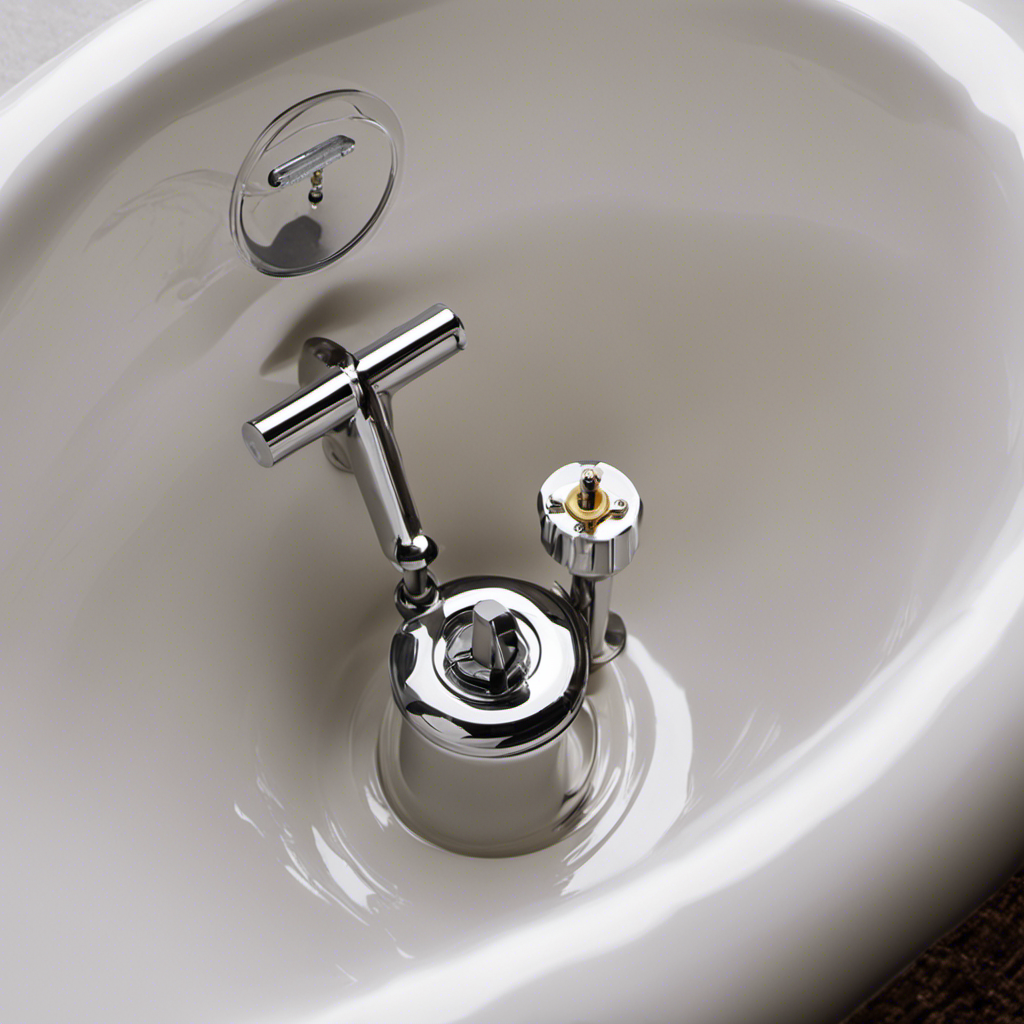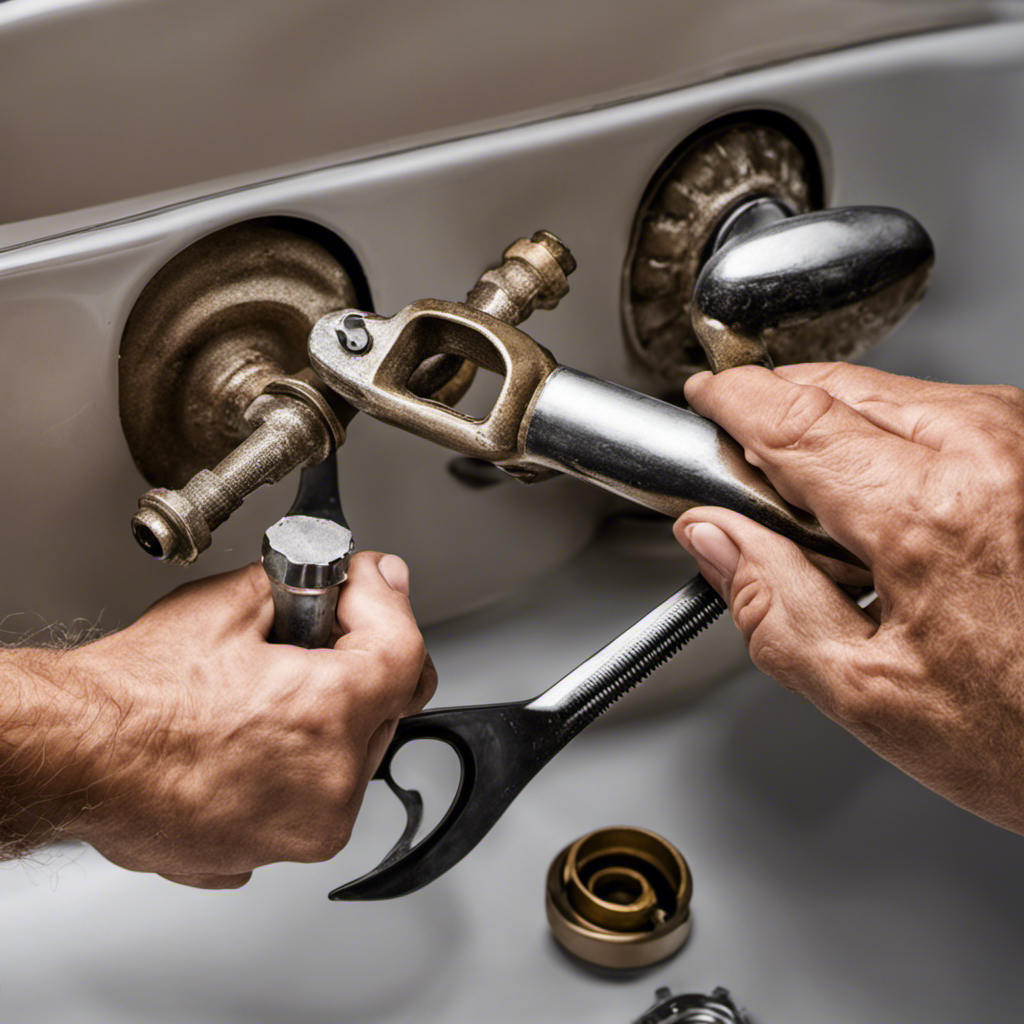Why is sewage coming out of my bathtub? It’s a question that no homeowner wants to ask. Unfortunately, it’s a problem that many of us may encounter at some point.
In this article, I will explore the common causes of sewage backflow in the bathtub, the signs and symptoms to watch out for, and the plumbing issues that can lead to this unpleasant situation.
I will also provide steps to take when sewage starts coming out of the bathtub and preventive measures to avoid future backup.
Let’s dive in and tackle this messy issue together.
Key Takeaways
- Sewage coming out of the bathtub can be caused by various factors such as clogged sewer lines, debris buildup, lack of maintenance, tree root intrusion, and damaged pipes.
- Signs of sewage backup in the bathtub include slow draining, gurgling sounds, foul odors, multiple drain backups, and actual overflow of sewage.
- Plumbing issues like blockages, damaged sewer lines, debris buildup, tree root intrusion, and corrosion can lead to sewage coming out of the bathtub.
- Steps to take when sewage starts coming out of the bathtub include turning off the water supply, attempting to clear the blockage with a plunger, contacting professional plumbing services, considering a sewer line inspection, and taking preventive measures to avoid further backup.
Common Causes of Sewage Backflow in the Bathtub
One of the most common causes of sewage backflow in the bathtub is a clogged or blocked sewer line. When the sewer line gets obstructed, it prevents the wastewater from flowing freely, causing it to back up into the bathtub.
A clogged drain can occur due to various reasons, such as the accumulation of debris, grease, hair, or foreign objects that are flushed down the toilet or poured down the drain. Over time, these substances can build up in the sewer line and create a blockage, leading to sewage backup in the bathtub.
If left unaddressed, the problem can escalate and result in further damage to the plumbing system.
Now, let’s explore the signs and symptoms of sewage backup in the bathtub.
Signs and Symptoms of Sewage Backup in the Bathtub
You may notice signs and symptoms of a backup in your bathtub when sewage starts to overflow. This is a clear indication that something is wrong with your plumbing system. Here are some signs to look out for:
-
Slow draining: If you notice that water is taking longer than usual to drain from your bathtub, it could be a sign of a blockage in your pipes.
-
Gurgling sounds: If you hear strange gurgling noises coming from your toilet or bathtub when you flush, it could mean that there is a blockage in your sewer line.
-
Foul odors: If you detect a foul smell coming from your bathtub or bathroom, it could be a sign that sewage is not flowing properly and is backing up.
-
Multiple drain backups: If you are experiencing backups in multiple drains in your home, it is a strong indication that there is a problem with your main sewer line.
If you notice any of these signs, it is crucial to contact a professional plumber immediately. Ignoring the problem can lead to more severe plumbing issues that can result in sewage coming out of your bathtub.
Plumbing Issues That Can Lead to Sewage Coming Out of the Bathtub
If there are plumbing issues, such as a blockage or a damaged sewer line, it can result in sewage overflowing into the bathtub. These problems can be caused by various factors, including the buildup of debris, tree root intrusion, or corrosion of the sewer pipes.
When a blockage occurs, wastewater is unable to flow properly, leading to backups and potential overflow in the bathtub. In some cases, a damaged sewer line can also cause sewage to seep into the bathtub through cracks or holes.
To address these issues, it is important to seek professional assistance for plumbing repairs. A trained plumber will have the expertise and tools to identify the underlying cause of the problem and provide the necessary repairs or replacements to prevent further sewage backup.
Steps to Take When Sewage Starts Coming Out of the Bathtub
When sewage overflows into your bathtub, it is crucial to take immediate action to prevent further damage and health hazards. Sewage backup can be caused by various plumbing issues such as clogged drains, sewer line blockages, or a malfunctioning sewer system.
Here are the steps you should take to fix sewage backup:
- Turn off the water supply to prevent any more sewage from entering the bathtub.
- Use a plunger to attempt to clear the blockage. Be cautious not to push the sewage further into the drain.
- If the blockage persists, call professional plumbing services to assess the issue and provide appropriate solutions.
- Consider getting a sewer line inspection to identify any underlying problems that may have caused the backup.
Preventive Measures to Avoid Sewage Backup in the Bathtub
To prevent sewage backup in your bathtub, it’s important to take preventive measures. Regular maintenance and professional assistance can help ensure that your plumbing system remains in good working condition. Here are some maintenance tips to keep in mind:
| Maintenance Tips | Professional Assistance |
|---|---|
| Avoid flushing non-biodegradable items such as wipes, sanitary products, and paper towels down the toilet. | Schedule regular inspections and cleanings with a licensed plumber. |
| Use drain screens to catch hair and other debris before they enter your pipes. | Install backflow prevention devices to prevent sewage from flowing back into your bathtub. |
| Avoid pouring grease or oil down the drain as it can solidify and cause blockages. | Seek professional help if you notice slow drains or gurgling noises coming from your bathtub. |
| Consider using enzyme-based drain cleaners to prevent buildup in your pipes. | Consult a professional plumber if you need to replace outdated or damaged plumbing fixtures. |
Conclusion
As I stood in shock, sewage water gushing out of my bathtub, I couldn’t help but wonder how this could happen. The signs were all there – the foul smell, the slow drainage, the gurgling noises.
Little did I know that it was a result of plumbing issues that had been building up over time. But fear not, for there are steps to take when faced with such a situation.
From calling a professional plumber to implementing preventive measures, one can safeguard against the nightmare of sewage backup in the bathtub.
So, stay informed and take action before it’s too late.










